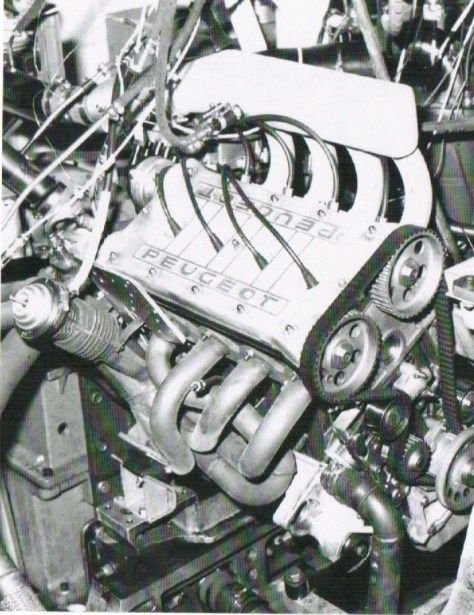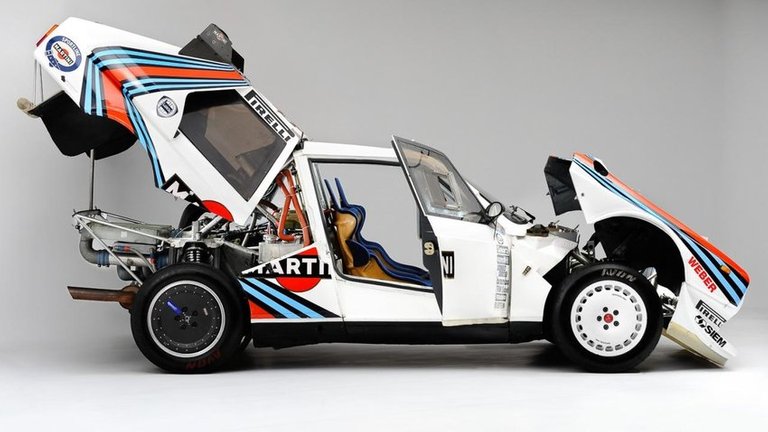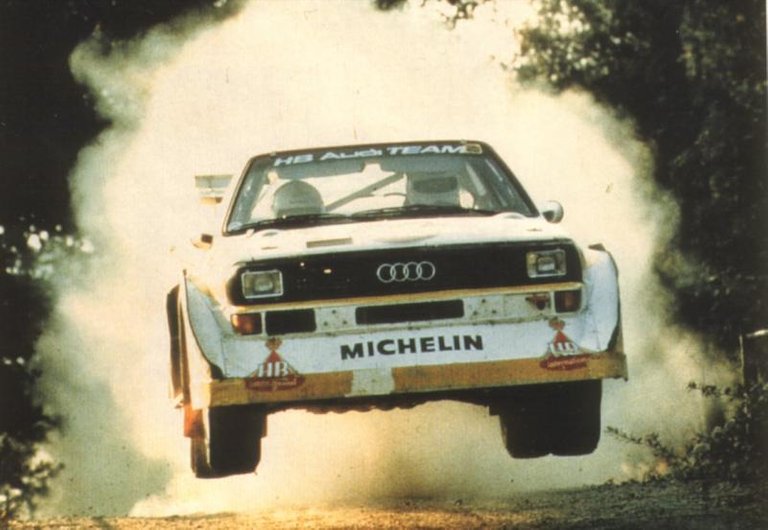Introduction
Group B introduced in 1982 by FIA (Fédération Internationale de l'Automobile) was a set of regulations for competition vehicles. It was home to some of the most powerful, fastest and most sophisticated rally cars ever built. Most of the people commonly refer to it as the golden era of rallying.

By contrast, Group B had few restrictions on technology, design and the fact only 200 homologation cars would now be needed for it to be accepted in competition while there were 5000 units/year needed to enter Group A. Weight was kept as low as possible, high-tech materials were permitted, and there were no restrictions on boost, resulting in the power output of the winning cars increasing from 250 hp in 1981 to more than doubled in just 5 years.

Below are classes in Group B:

Let us start with the lowest class.
Renault 5 Turbo
Officially homologated in 1980, the Renault 5 turbo unleashed as a group 4 rally car around the same time of the introduction of the Audi Quattro. While Quattro is regarded as a revolution in rallying thanks to its 4WD (Quattro), the R5 Turbo was important game changer since it's mid-engine conversion would be a recipe followed by man's other subsequent rally car designs. R5 Turbo is often regarded as the school of Group B 
Renault introduces a new version in 1983, for the official transition from Group 4 to Group B. It featured minor aerodynamic improvements and a stronger engine rating of 210BHP, but as much as 285BHP was reported by the end of 1984. With an engine displacement of 1397cc, it found itself handicapped. 
In late 1984, Renault sport took advantage of Group B's evolution and introduce the ultimate version of the R5 Turbo Maxi. Engine displacement was increased to 1527cc. The new C7K engine produced 360BHP and more torque than its predecessor. Also implemented was the newly-developed anti-lag system found on its Formula One engines, providing instantaneous power.

Peugeot 205 T16
Peugeot wanted to develop Group B rally car out of the normal road-going 205. They've turned to the newly acquited Talbot brand since it had extensive experience in rallying. In 1981 they've won WRC manufacturer title with their Sunbeam Lotus, that was similar to small hot hatch as Peugeot 205.

To Peugeot's Chairman, Jean Boillot felt very important that motorsport project should be headed by a fellow Frenchman. He appointed Jean Todt: a man with extensive experience as a rally co-driver and with natural management abilities.

The budget was almost without limit and in fact, only real constraint engineers had was to fit 4WD into small 205 chassis. 205 Turbo16 was mid-engined (for better weight distribution, traction) turbocharged, 1775cc, 350BHP with modified DOHC 16 valve head to run gasoline. The engine was built around Peugeot's new XU line of diesel engines.

The 205 T16 combined lightweight, small size and powerful engine that proved to be an immediate recipe for success, setting fastest stage times at its very first rally.

It became unbeatable at the end of the 1984-1985 WRC season with a string of six stage-rally victories. The little Peugeot forced arch-rival Audi to completely revise their Quattro to hopefully remain competitive

Lancia Delta S4
In 1982 Lancia had its brand new Group B contender: Rallye 037. Car sported classic rear wheel drive layout, however it was very clear that ever improving Audi Quattro had left 037 struggling to match pace in many events.
Lancia managed to convince Fiat managment that they had no choice but to come with 4WD rally car design. Abarth designed an all new F1-inspired engine especially for Delta S4. Engine was 1759cc, very lightweight, incredibly balanced with rev range up to 10.000RPM.

Abarth also combined both supercharching and turbocharging to improve turbo-lag issue. While official BHP was originally rated at 450BHP, most insiders agree it was much closer to 550BHP. It was unofficially reported that in 1986 Henri Toivonen drove two test laps on F1 circuit in Portugal, Estroil, with 800+BHP version that would have placed him in the top 10 grid in F1.

Henri Toivonen won at the 1985 Lombard RAC rally on car's debut. Fatal crash in 1986 where he lost control of the S4 at the Tour de Corse, killing himself and his co-driver. The crash brought Group B to an end, with the FIA ruling that the regulations would be outlawed at the of of the 1986 season.

Despite that, the S4 won three more times after Toivonen's death, while its succesor, the group A-spec Delta, would go on to become the most successful rally car of all time

Lancia 037
Arguably the best-looking car of the WRC’s Group B era, if not the most successful, the rear-wheel drive 037 managed to claim one Constructors’ title for Lancia in 1983 in the hands of two legends of the sport, Walter Röhrl and Markku Alén.

Lancia 037 retired under the pressure of four-wheel drive competition from both Peugeot, with their 205 T16, and Audi, with their uprated Sport Quattro.

The 037 was powered by a supercharged 2.0-litre four-cylinder engine that put out around 350bhp in its final incarnation. But, more importantly for rally fans, it was also the first Lancia to sport the iconic Martini livery.
Audi Quattro
There have been game changers in rally, but nothing on the scale of the Audi Quattro.
WRC manufacturers had initially resisted adopting four-wheel-drive on their cars, thinking that the extra weight and complexity of the systems would cancel out any advantages.
But when the original non-Group B Quattro debuted in 1980, it immediately showed that a well-sorted four-wheel-drive system was the business.

The new Sport Quattro S1 featured an upgraded all aluminium 20V turbo engine. The formula was refined; power figures were increasingly hiked to a reported 591bhp in 1986, and the blueprint of modern rally cars was set.
Rally ace Walter Rohrl, describes it as one of the most intense machines he ever got to drive: "with this car, you have to think two corners ahead ... finding the correct balance was a big challenge"

MG Metro 6R4
Austin Rover’s tiny, mad MG Metro 6R4 was a late arrival to the Group B party. Engineered by the Williams F1 team, the 6R4's non-turbocharged 2.9-litre V6 engine cranked out 410bhp.

Despite the 6R4's shortness making it infamously difficult to drive fast, plus the fact that it suffered from serious reliability issues, the little Metro still managed to wriggle its way into the hearts of rally fans in its short WRC career. Group B got banned six months into the 6R4’s competition life.
Ferrari 288 GTO and Porsche 959
The Ferrari GTO was built to compete in the new Group B Race series and a minimum of 200 cars were required for homologation. However as only Ferrari and Porsche, with their 959, entered, the series was soon abandoned leaving just the Group B Rally championship.

The Porsche 959 only raced three times in Group B, but the 288 GTO never raced and all 272 cars built remained purely road cars.

The corner that killed Group B
On 2 May 1986, Henri Toivonen, his co-driver Sergio Cresto, and Group B rally cars died at Tour de Corse. Corner is a treacherous left-hander with a drop so vast the sun can’t make its way through the trees to the bottom. Within hours of the accident the FIA banned Group B cars from competing in the ’87 season.
Unprecedented levels of power, excitement – and controversy. Group B rallying had it all. Many of the Group B drivers have become legends and the cars retain a place in the hearts of fans having enthralled a generation with their performance and pushed boundaries with their technology.